While it may not have always been this way, the three-cylinder engine has pretty much been confined to the K-cars of the Japanese domestic market for a long time.
In Malaysia, you could have a three-cylinder engine, that is if you bought a Perodua with an engine size 1.0 litre and below, but for other manufacturers, they’ve stayed away from three-pot mills so far. For even a 1.1 litre displacement unit, one usually uses a four-cylinder configuration instead. The reason? Noise, vibration and harshness – three-cylinder engines are apparently not very smooth.
But in this age of V8s giving way to six-potters, and six-potters giving way to four-cylinders, everything has changed. The four-cylinder units are being downsized too. All of the sudden, three-cylinders are all the rage again, with Peugeot and Ford recently announcing new three-cylinder families. Fiat even has a two-cylinder engine.
But these are mass market brands. Does a three-cylinder unit belong in a premium brand? Apparently, BMW thinks so, and it also believes it has the necessary engineering prowess to make it work. We were in Munich to learn first hand about its new family of engines, which starts with a small 1.5 litre three-cylinder petrol engine.
The new unit is codenamed B38, and there will also be a diesel counterpart called the B37. From this new three-cylinder engine family will spawn four-cylinder and six-cylinder versions. No mention of an eight-cylinder – this could mean the eight is on the way out or BMW is set to separate the V engine family from the inline engine family.
For this new family, each individual cylinder will have around 500 cc of displacement, as BMW has found that it is a sweet spot between a smaller individual cylinder – which means better acoustics and reduced vibrations – and a larger individual cylinder, which means higher efficiency, reduced friction and less parts. The new cylinders will have a longer stroke and narrower bore compared to current configs, with higher compression ratios.
This means the three-cylinder will be 1.5 litres, the four-cylinder (which will be called the B48/B47) will be 2.0 litres and the six-cylinder (B68/B67) will be a 3.0 litre unit. Simple, right? BMW already has 2.0 litre and 3.0 litre turbocharged engines running on both petrol and diesel fronts, so new versions of those engines will be derived from this new B38/B37 engine family.
The new engine family is designed to be able to be installed in both a longitudinal as well as a transverse position in the engine bay, and they’ll be able to do both front-wheel drive, rear-wheel drive and all-wheel drive. But it’s likely that only the smaller three- and four-cylinder engines will be installed in a front-wheel drive config.
A decade ago, petrol engine turbocharging was a no-no for BMW. Oh, how things have changed. All versions of the engines have TwinPower Turbo technology. What TwinPower Turbo means exactly has been evolving over the years. First, it meant the engine had two turbochargers. Next, BMW extended the use of the term to engines that had a single twin-scroll turbocharger.
Now, the TwinPower Turbo brand name means combining turbocharging with two methods of making an engine both more powerful and more efficient. For petrol engines, the two technologies are Valvetronic as well as High Precision Injection, while for diesel engines you have variable turbocharger geometry as well as a third-generation commonrail technology.
Valvetronic is BMW’s solution for increasing engine breathing efficiency. Though companies like Audi and Honda may disagree, BMW says the solution is a far more effective solution than cylinder deactivation. Munich’s boffins liken it to dimming four lights in a room to achieve the desired lighting instead of switching off two of the four lights.
Valvetronic is claimed to be less complicated and easier to implement on different engine cylinder configurations. A study it did revealed that cylinder deactivation only works 60-70% as often as Valvetronic can.
As for the turbo part of TwinPower Turbo, petrol engines will come with either a single mono-scroll turbo, a single twin-scroll turbo, or twin turbos. The new three-cylinder engine uses the single mono-scroll turbo; BMW says that the torque response of a mono-scroll turbo on the new engine closely matches the response of a four-cylinder twin scroll turbo, in fact bettering it very slightly, as you can see in the graph above.
The diesel engines will have VGT turbos in either a single, twin or triple turbo configuration. We already see this in the current 3.0 litre turbodiesel engine family – when equipped with a single turbo you get a 30d tune, go twin turbo and you get a 40d tune, and finally top it up to the full tri-turbo configuration and you get the 50d engine found in the M550d, X5/X6 M50d and 750d.
BMW’s target output for each 500 cc cylinder is about 40 hp to 67 hp for petrol engines, and for diesel engines it’s 27 hp to 60 hp.
As for torque output, each 500 cc cylinder is expected to produce between 60 Nm to 90 Nm for petrol engines and between 75 Nm to 100 Nm for diesel engines. A range of power and torque output is given, as BMW typically has different tunes for a specific displacement engine, for example the current 2.0 litre four-pot model comes in 20i and 28i tunes.
We’ve calculated the low and high ends of horsepower and torque output for the new family of three, four and six-cylinder engines for easy reference of what the potential can be. Of course, the table above only shows the potential low and high end ranges for output. The various horsepower and torque numbers made available in actual production cars might be anywhere in between the lower and upper end of the numbers shown.
The highest possible output for the 3.0 litre six cylinder petrol engine looks very interesting – at over 400 hp and 540 Nm of torque potentially, that’s definitely next-generation BMW M3 territory.
Take a look at the graph below, which shows what BMW thinks is the optimum usage for its new engine family, according to the size of vehicle. From the graph above, it looks like the new 1.5 litre engine is probably set to be used in vehicles that have an upper limit of weight around 1,300 kg and below.
I don’t think it’s an absolute guide though, possibly what would be “right-sized” for the car. There will always be lower-end models with smaller engines and upper-end models with oversized engines for brute power.
For example, given that a 320i currently weighs between 1,475 kg, I suppose this would rule out its usage in such a car, but in reality the power output that the 1.5 litre unit can produce would be more than enough to power the car. In fact, if you look at the current F30 316i, it’s already powered by a 1.6 litre four-pot doing 136 PS. Based on this, I’d say we’ll find the three-cylinder in the 1-Series and 3-Series, in entry-level models.
The new engine family also shares a great deal of parts within the different models – up to 60% between engines that are powered by the same fuel but vary in displacement, and between 30% to 40% between petrol and diesel engines. Even the installation angle and the vehicle interface (connection to the gearbox) is the same.
The company has also built in the possibility for capacity exchange in the production network through interconnected assembly lines, with the four- and three-cylinder petrol and diesel versions having the most flexibility in this regard. This will allow BMW to switch production to different types of engines, enabling swift responses to changing market and customer requirements.
Most importantly from the consumer’s point of view, the point of all of this is reduced fuel consumption. The new engine family is expected to reduce fuel consumption by between 5% to 15%, depending on the configuration of installation.
Anyway, back to the three-cylinder. It enjoys reduced fuel consumption by virtue of its low internal friction, and is nearly 10% lighter and up to 15% more fuel efficient than the current 2.0 litre four-pot. So how does one make a premium three-cylinder engine? There are predominantly two issues to tackle – noise and vibration. According to BMW, the three-cylinder shares a number of common features with the six-cylinder inline engine – neither of them generates free inertial forces, nor free moments of inertia.
The three-cylinder engine is also free of first and second order inertial forces and roll torque, which is very small compared to the six-cylinder engine, is completely eliminated by the use of a single balance shaft. A torsional vibration damper, which works on the principle of a centrifugal pendulum, allows the engine to behave well at low RPMs.
As for sound – that’s where it gets more interesting. We all know the new four-cylinder TwinPower Turbo engines found in the 328i, 520i, 528i etc don’t sound as good as their six- cylinder counterparts. BMW however says the new three-cylinder engine sounds similar to the six instead of the four. At first, I was a little skeptical about this.
The company explains that the frequency of the sound that a three-cylinder engine makes as it revs increases at a rate of about 50% quicker than a four-cylinder unit. To our ears, that’s perceived as being sportier. Basically, an engine produces sounds at various different frequencies. BMW found that the dominant frequency of engine sound of a three- cylinder is close to the range of what a six-cylinder makes, as shown in the graph above.
There are also a lot of secondary frequencies that are produced – the company has used various methods such as exhaust system design to dampen the unwanted frequencies, as well as boost the dominant six-cylinder-like frequency, improving the quality of the sound produced.
Of course, the proof is in the pudding. Graphs and numbers can only say so much. Thankfully, we had the opportunity test drive a car with the three-cylinder engine installed to discover how it actually sounds. The debadged 1-Series you see here runs a prototype version of the B38, mated to an eight-speed Sports Automatic transmission.
Pop the hood and you’ll see the three-cylinder neatly installed as if it were a production car, mounted way back in the engine bay, helping with the weight balance. This same engine bay has to house a big 3.0 litre six-cylinder in the M135i version, so in comparison the 3-cylinder should look tinier than it does here, but the big radiator shroud plastic ahead of the engine masks how much space there is. The B38 engine has a very production-looking plastic engine cover on it, with three “raised stripes” on the right side of the cover where the intake would be, indicating this is a three-cylinder unit.
Our test drive was limited to two laps around BMW’s new 130 hectare BMW Driving Academy in Maisach just outside of Munich, built on what used to be the Furstenfeldbruck airfield. The course was built using cones and consisted of a mix of corners and straights.
The BMW engineers on location revealed that as installed in the 1-Series, the 1.5 litre B38 was doing about 180 PS at 5,000 rpm and 270 Nm of torque from about 1,400 rpm, which is pretty much similiar to the current four-cylinder’s 20i tuning. In Malaysia, we have it installed in the 320i, 520i and X3 xDrive20i. So I suppose if you could give this 1-er a production badge, it would be a 120i.
I haven’t driven a 120i before, so I can’t make comparisons. But I have driven a 520i and an X3 xDrive20i, so I know how the four-cylinder sounds like. And I can tell you that the three-cylinder sounds quite different from the four cylinder. It starts up and settles into a smooth rumble. Start off and you’ll be greeted with a soundtrack that’s growlier and more energetic than the four-cylinder engine – smooth, with no vibrations. You can hear it for yourself in the video embedded here, although I must say that the sound picked up by the camera isn’t really the same as what you hear in real life.
There’s also very little turbo lag, and the power delivery is very linear, which also means the power build up is relatively more progressive compared to the big BAM! from the very beginning that you get with the larger-powered turbo petrol engines like the N54. In this sense, the B38 encourages you to rev the engine as there’s a nice build-up of power to look forward to. The rumble fades into a smoother whine that’s very six-cylinder-like in the second half of the rev range – this is the soundtrack that we all refer to as “sounds like a turbine”.
The car sounds good to the pedestrian as well, and there’s plenty of turbine whine to be heard from the outside, but in the 1-er that I was driving this turbine spool was completely masked out from the interior. I distinctly remember the turbine and recirculating valve being a little more audible in the four-cylinder engine. There’s a really nice exhaust pop during gear changes though, something that BMW gives you when a car is equipped with the Sport AT as opposed to the regular eight-speed AT.
It’s definitely a very interesting engine, and we’re looking forward to the first cars with a production version of the engine to debut. What I couldn’t get to experience during the test drive is how smoothly the engine restarts during auto start/stop operation, as the prototype was not equipped with such a system. Our experience with the four-cylinder engine’s auto restart is not a particularly smooth one compared to the restart of a six-cylinder, so we wonder if the three-cylinder will be jerkier than the four-cylinder.
The introduction of this new engine family should also probably put to rest some rumours that the next generation M3 will be powered by a V6 instead of an inline-6, as we don’t see BMW investing in such a one-off engine to be in sync with efforts to improve production efficiency by commonising parts between these three engine sizes. The next generation M3 might be an M version of the new B68.
With even Audi announcing a 1.5 litre 3-cylinder during the week that I wrote this story, it looks like the three-cylinder is firmly here in the premium segment. I wonder how much smaller things can go.



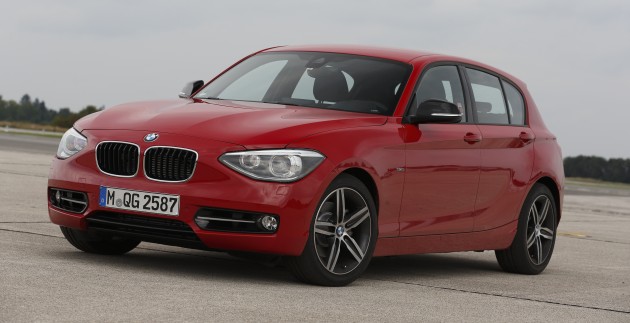
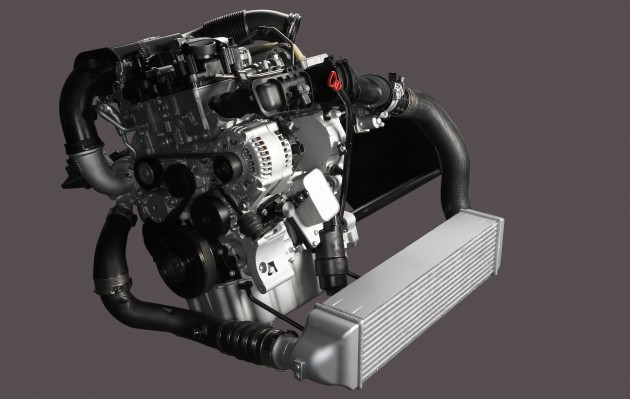
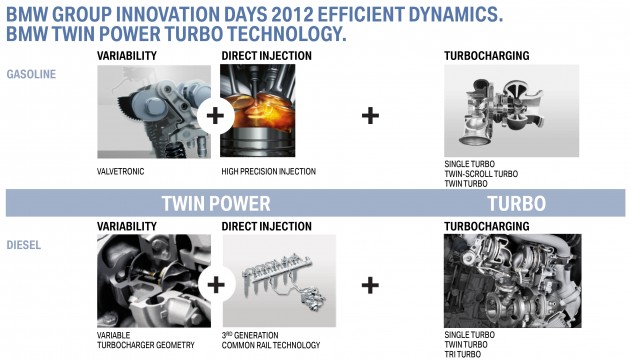
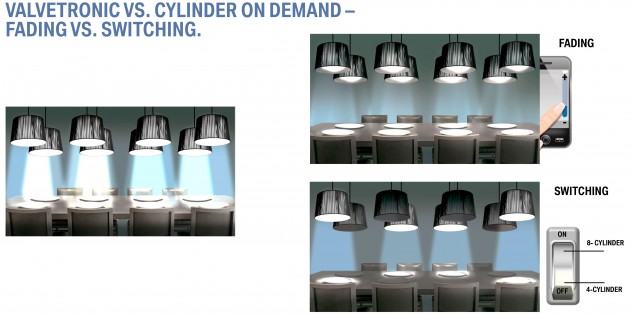
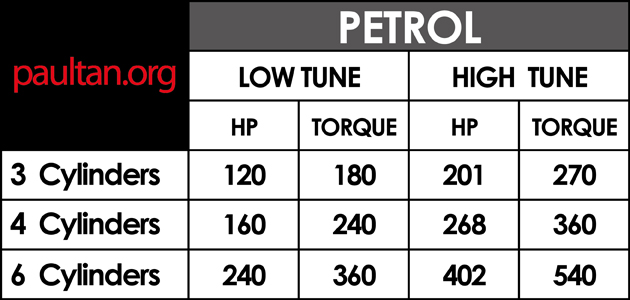
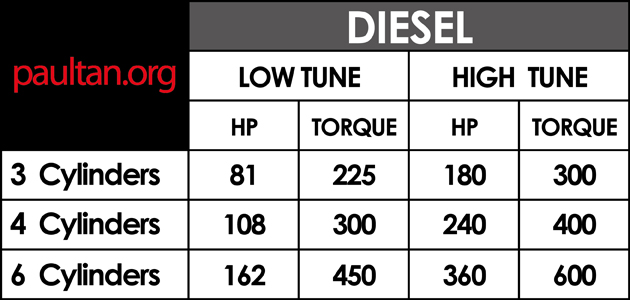
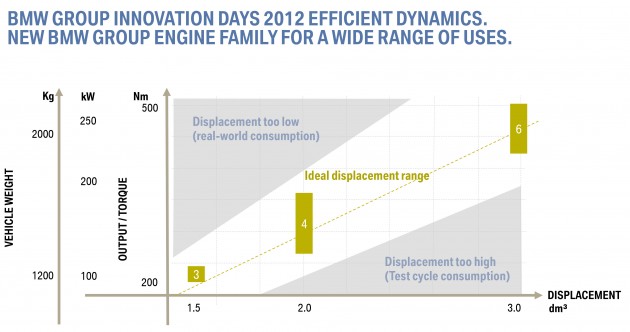
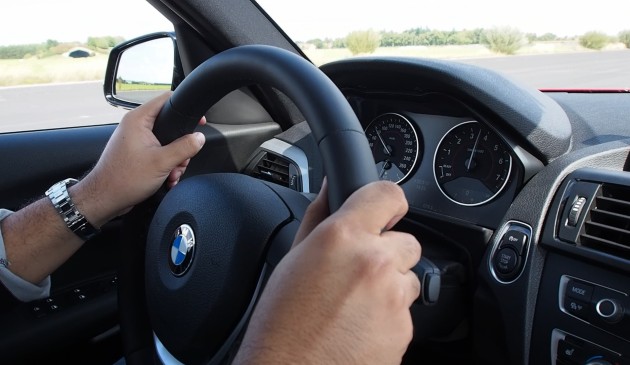
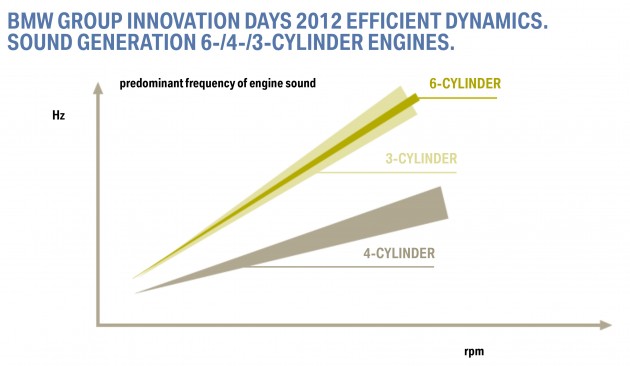
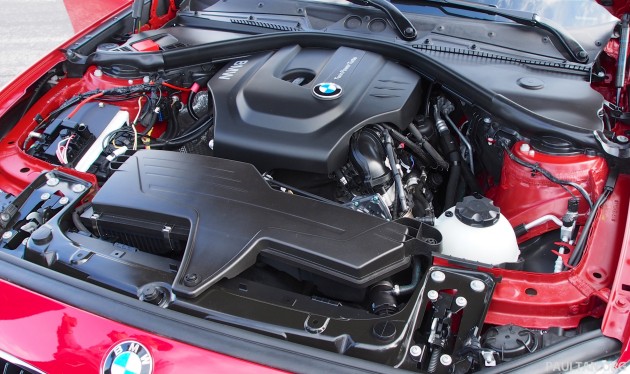
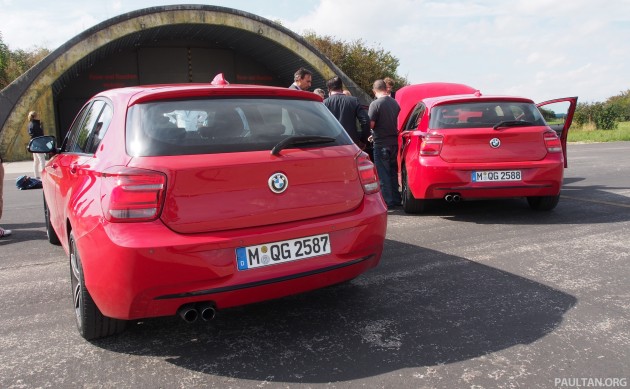






0 comments:
Post a Comment